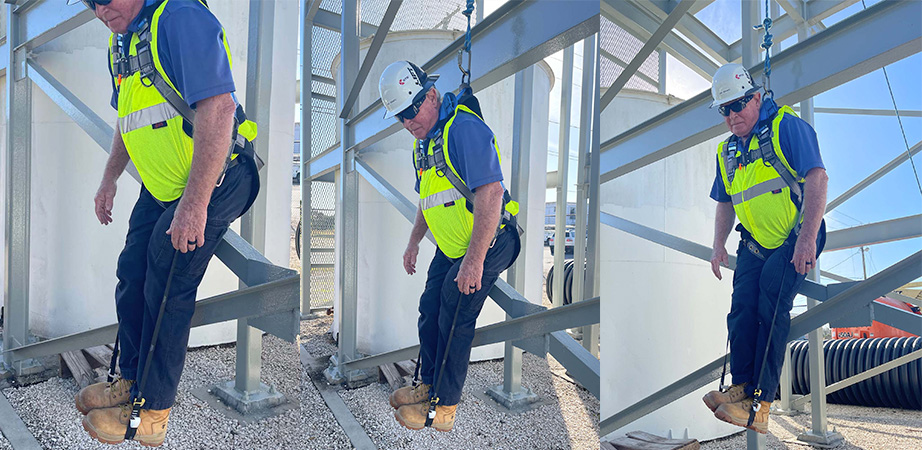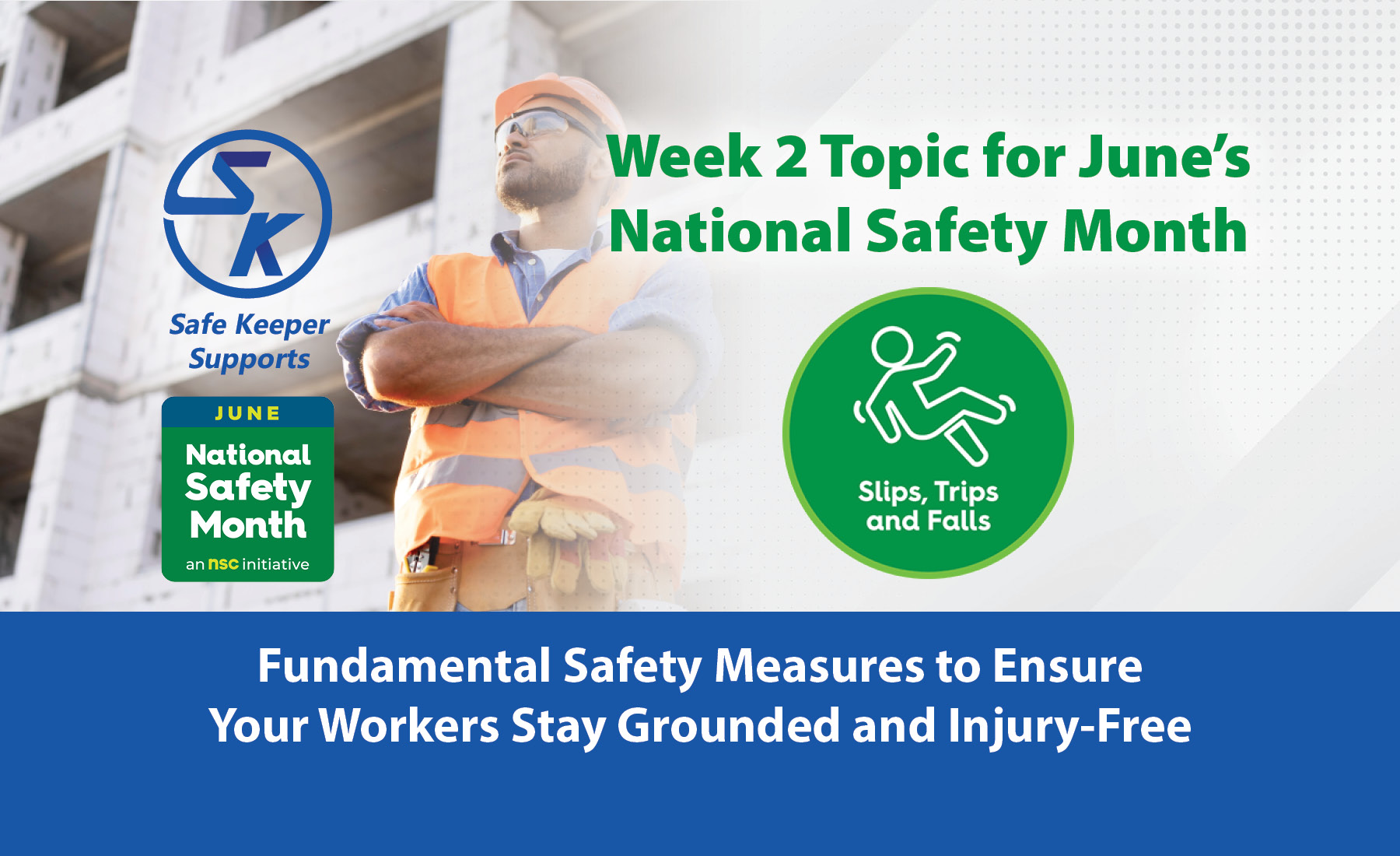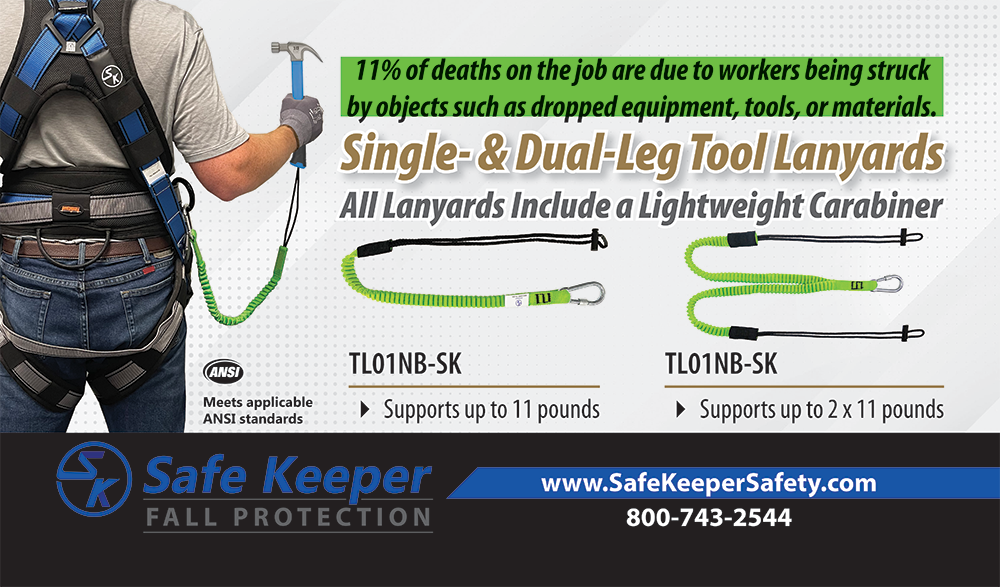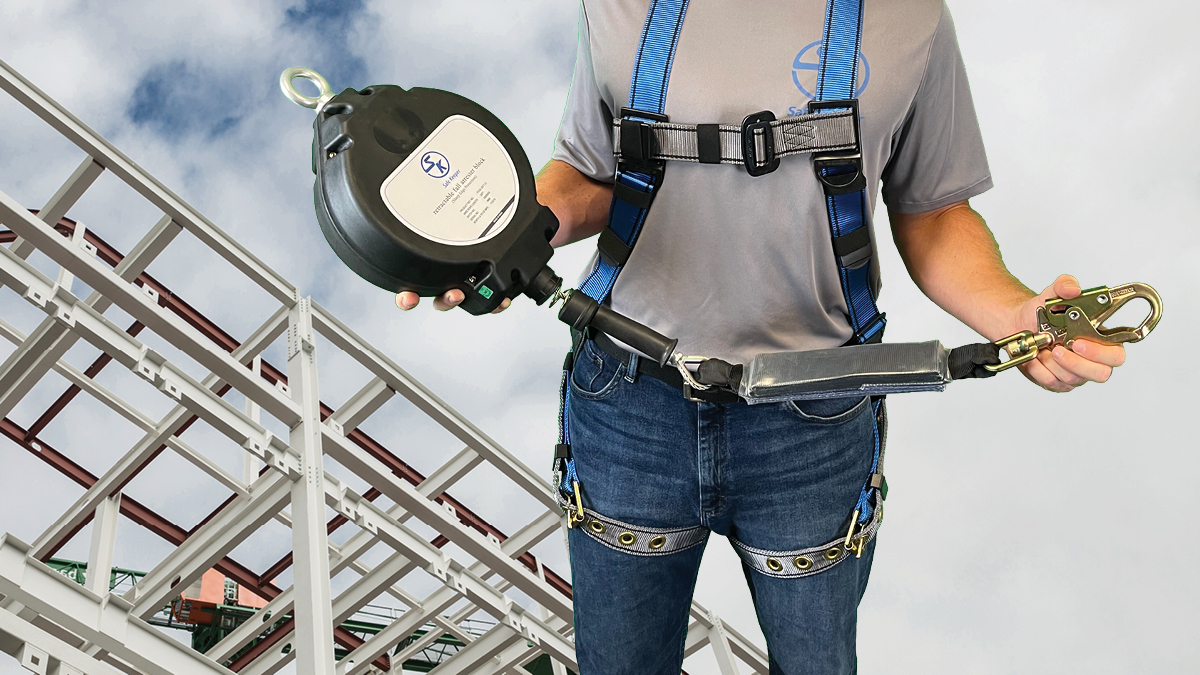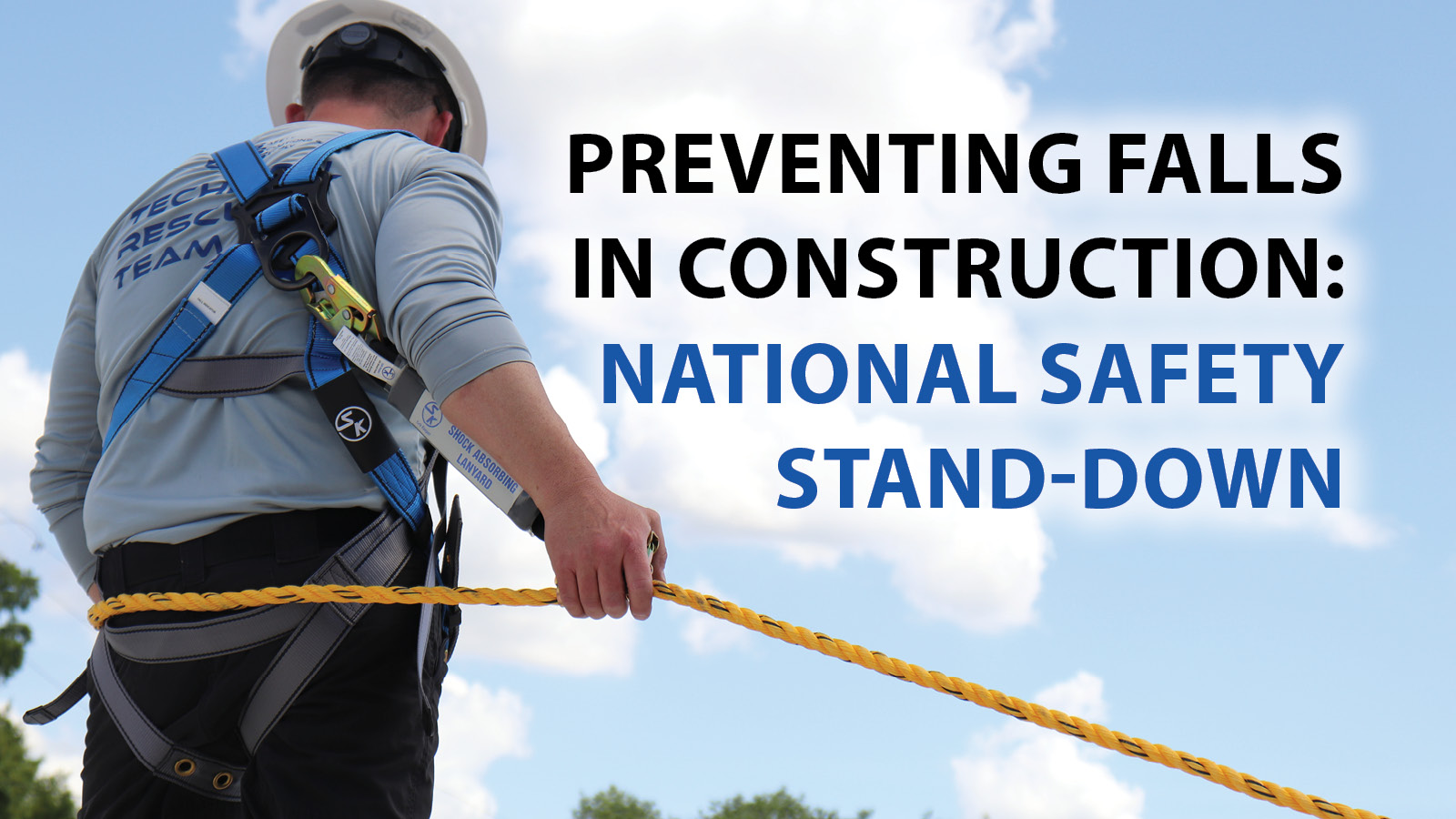Employers requiring their workers to work at heights should be aware of the dangers of suspension trauma and the importance of having a suspension trauma relief pack available in case of a fall. Suspension trauma is a life-threatening condition that can occur when a worker is suspended in a harness for too long, resulting in decreased blood flow, unconsciousness, and even death. Employers must include suspension trauma prevention strategies in their fall protection plans to prevent such a tragedy and ensure each worker is equipped with trauma relief straps.
What is Suspension Trauma?
Suspension trauma, also known as harness hang syndrome (HHS) or orthostatic intolerance (OI), is a medical condition that can occur after a worker is suspended in the air following a fall. It occurs when the body’s femoral arteries in the legs become constricted, leading to decreased circulation and an increased burden on the heart. Symptoms of suspension trauma include dizziness, nausea, a drop in blood pressure, and a decrease in heart rate. Additionally, due to a lack of oxygen-rich blood reaching the body’s extremities, anaerobic respiration occurs, resulting in a lactic acid build-up that can cause organ and heart failure if left untreated.
How to Prevent Suspension Trauma
- Workers should carry a suspension trauma relief pack while working at heights. A suspension relief pack contains straps to secure the worker’s feet and body.
- Employers must ensure that all workers understand the importance of carrying these packs and attach each pouch to both sides of their harnesses whenever they work at heights.
- Employers should also consider creating a rescue plan for workers who lose consciousness after a fall. This plan should include guidelines for promptly rescuing workers and getting them to a medical facility.
- Employers must also ensure that rescue teams are adequately trained to safely and effectively perform a rescue and that their rescue equipment is up-to-date and in good condition.
What to Do if Someone is Suffering from Suspension Trauma
If someone is suspended in a fall, they will likely suffer from suspension trauma, a medical emergency requiring immediate action. To prevent suspension trauma from occurring, you must deploy and use the straps in a suspension trauma relief pack. These devices are typically included with any worker’s fall protection equipment.
Suspension trauma relief packs contain straps designed to spread the pressure of the harness evenly across the body, improving circulation and reducing the risk of shock or unconsciousness. The steps for using the straps while suspended are as follows:
- Unzip the pouches fitted on both sides of the safety harness to deploy the straps.
- Hold each strap together and connect them with the buckle to make a loop.
- Place your feet into the circular straps and stand so the thigh straps on the harness can move.
- Push your feet slightly forward to relieve pressure while maintaining a seated-like posture until help arrives.
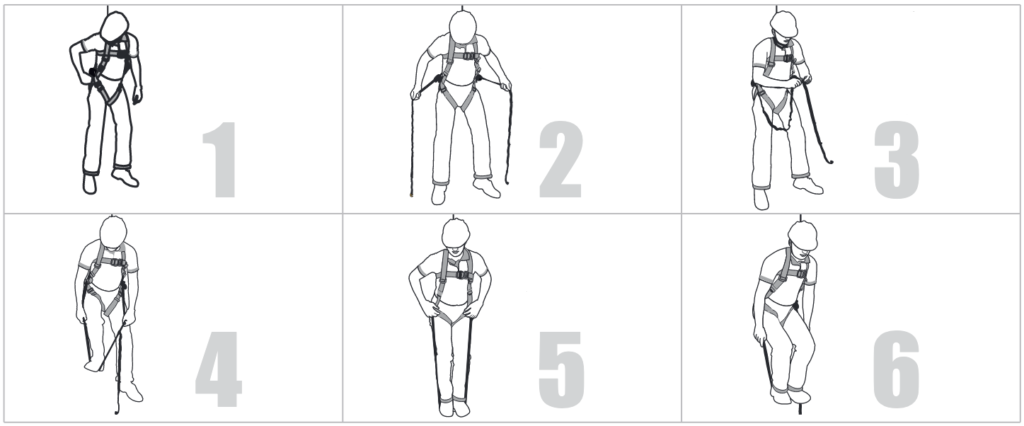
By deploying and using the suspension trauma relief straps while suspended in a fall, you can reduce the risks of suspension trauma and ensure that workers remain safe when working at heights.
Why Fall Protection Plans Must Include Suspension Trauma Prevention Strategies
Because falls are one of the leading causes of death and injury in the workplace, employers must have a comprehensive fall protection plan outlining safety procedures and strategies to prevent suspension trauma—a hazardous condition resulting from an individual being restrained in a safety harness for an extended period. The program must contain details of safety protocols and methods of safeguarding workers.
Employers must include suspension trauma prevention strategies in any fall protection plan to prevent this injury or death. Suspension relief packs, which can provide the suspended person with a stable structure to stand on, should be included with the worker’s fall protection equipment. In addition, workers should be trained to quickly recognize the signs and symptoms of suspension trauma and how to respond if someone suffers from the condition.
Overall, any employer must have a comprehensive fall protection plan that includes suspension trauma prevention strategies. Doing so will help ensure their employees’ safety and everyone follows proper safety protocols when working at heights.
Suspension Trauma Relief Pack by Safe Keeper
Safe Keeper carries a suspension trauma relief pack featuring storage pouches with adjustable straps attached to each harness side, protecting against suspension trauma. Safe Keeper also has a wide range of fall protection products, accessories, and confined space entry gear!
